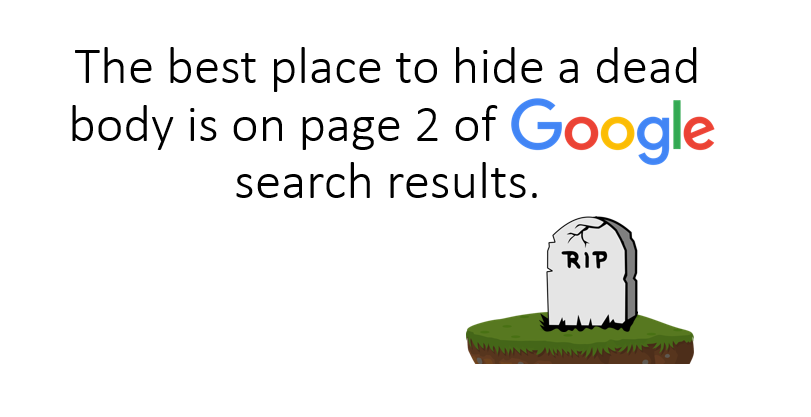
It has been well documented that the best place to hide a dead body is on the second page of google search results. That doesn’t seem like an ideal place to find your website either, that’s why you need search engine optimization (SEO). One of the many effective tools for boosting your website’s ranking is writing blogs with SEO. The key reason for this is that search engines love fresh and unique content! While the algorithms and policies surrounding page rankings change from time to time, this key reason has remained a constant. If you have the time, and you have the budget, why not dedicate an hour or two each week to write a compelling blog.
Vox ISM’s 5 guidelines for writing blogs with SEO
1. Tell a story
Open up Microsoft Word, grab a cup of coffee, relax, and pretend you’re sharing a story with your co-worker in the breakroom. This isn’t just for your sake but your audience’s as well; your audience will appreciate being spoken to as a friend or colleague more than as customer or prospect. Use proper paragraphs to form your story (this isn’t an email) and maintain a solid paragraph structure with a beginning, middle, and end. When you’re done share it with a colleague who is perhaps not as familiar as you in the subject matter. See if they understood the subject matter on its own and take constructive feedback to help them out. Afterwards include the missing components into your story, and check for grammar and spelling mistakes.
2. Use headings, and bold type where necessary
Headings and other visual indicators help a reader scan your article and get the key messaging faster. You might be thinking, “But don’t I want them to read the whole story?” Yes, but have you ever opened a book without reading the cover first? You want your audience to know what your blog is about and what they are going to get in return for spending their valuable time. Make it easy on them by using headings and bold type. Search engines pick up on your headings so this will help boost your page ranking. Fair warning, don’t go overboard here. 3 headings and 1-2 bold words or sentences should be more than enough.
3. Use keywords and speak your users language
Keywords and using the verbiage used by your audience is crucial to SEO. You need to include the keywords and phrases your audience would use when searching online. Tying back to number 1, tell a story, while using your keywords try to continue to speak naturally. To accomplish both tasks I make sure to switch up the names of particular items within my blogs. For example in this article you have seen the acronym “SEO” and the full term “search engine optimization” and other keywords like “search engine” and “page ranking”. This is how you can tell a story while still ensuring that your keywords are hit.
4. Include strong visuals and links
A strong visual engages your audience and helpful links will give them more bang for their buck. From an SEO perspective images and links provide additional keyword embedding opportunities. The file names for your images and the alternate text option provided by your content management system, allows you to use more keywords without making them visible to the reader. It is important to note that the alternate text will appear in the event your image does not load, so try to use your keywords in a legible sentence.
5. Don’t copy and paste
If you’re just getting started in the blogging world and you’re trying to promote your company, please don’t copy and paste information you found online. It’s great to reference your sources as it satisfies tip number 3 above, but too much copy and paste makes for a terrible reading experience. Be confident in your writing skills and embrace the learning curve, you’ll get there eventually.
When you’re ready to start writing blogs with SEO, remind yourself of the 5 bolded headings and have some fun.
Cheers!
Jacob Steinfeld
Vox ISM
CRM Consultant | Marketing Associate
